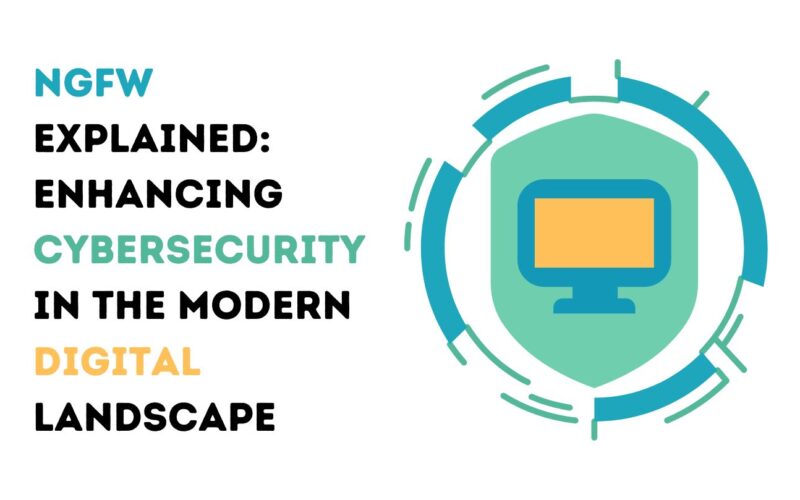An NGFW digs deeper into network traffic, inspecting packets beyond OSI Layers 3 and 4. It means threat detection capabilities can reach application-level attacks.
NGFWs also integrate anti-virus, ransomware & spam protection, and endpoint security, eliminating the need for separate tools. It improves visibility and makes deploying new strategies across the entire infrastructure simpler.
Deep Packet Inspection
What is NGFW advantages? Deep packet inspection (DPI) is an advanced network security feature that analyzes the content of data packets. Unlike traditional packet filters that check only the information in the packet header, including IP addresses, source and destination, and port numbers, DPI inspects the actual data contained within each packet. It allows NGFW to identify potentially malicious traffic and block it.
DPI also allows granular application control and visibility of what is actually in the network. It is helpful to prevent data leaks from applications like file transfer and remote access. For example, a company may want to allow all external files for backup and disaster recovery but prevent employees from copying and pasting files into email attachments. DPI can identify this activity, stop it, and alert the user to the problem.

Another benefit of NGFW is its ability to consider context when making decisions. For example, a sophisticated hacking attempt can often look just like legitimate network traffic. The built-in functionality to constantly receive threat intelligence network updates helps NGFW catch and stop this traffic.
That is why it’s essential to choose an NGFW with the appropriate level of performance for your business’s unique requirements. It should be able to handle high levels of simultaneous network traffic, decryption of SSL traffic, and the processing of large amounts of threat intelligence.
Application Awareness
As organizations digitized, the relationships between applications, ports, and protocols became more complex. As a result, traditional firewalls that identify network traffic based only on 5-tuple information cannot clearly distinguish traffic. To address this, NGFWs evolved with application identification technology that can differentiate applications based on what they do rather than their port and protocol.
This capability allows administrators to allow, block, or limit specific applications based on predetermined rules set by the security administrator. This granular degree of control can protect the organization against malicious software programs that can be used as a backdoor into the system.
The NGFW can also detect traffic patterns and anomalies in the data packets sent and received between systems. It enables the NGFW to identify and block attacks that bypass traditional security protocols like network-layer firewalls using advanced attack techniques.
This visibility and scalability capability is essential to today’s threat landscape, which demands robust protection from cyber attacks. To meet this demand, NGFWs can integrate with security intelligence services. It enables the NGFW to update its protections based on the latest threat intelligence from multiple sources. It means the NGFW can block new threats before they breach the system perimeter. This is a significant advantage over traditional firewalls that must manually update their threat protections continuously.
Sandboxing
When businesses choose software, they trust that the developers made it with security best practices in mind. Sadly, that’s not always the case. Malware programs and hackers can exploit apps to gain entry into networks. The good news is that NGFWs supporting sandboxing can help detect and block such attacks by dynamically testing an app, program, or file.
A threat is detected and sent to the sandbox for analysis. It enables cybersecurity experts to see how the danger behaves in a controlled environment. They can also see how the malware spreads in a network and the impact that it could have on business operations.

Sandboxing is an excellent solution for detecting threats that traditional detection methods, such as signature-based and threat intelligence, cannot catch. The sandbox can test the file for behavior and then return either a hash or a signature, depending on how it’s configured. The soup is easier for SIEM and other security tools to handle, while the signature takes longer, but both provide valuable information to prevent the spread of a threat.
NGFWs offer many features, including cloud-delivered threat intelligence, granular security policies, and built-in malware protection. They’re designed to protect against advanced, multi-stage threats targeting Linux systems, operational technology, and IoT devices.
Threat Prevention
Unlike traditional firewalls that limit network traffic based on IP addresses and ports, next-generation security devices inspect a data packet to determine whether the pack should enter the protected network. This type of inspection is called threat prevention. NGFW can perform this inspection in hardware or software, depending on the enterprise’s specific needs.
In addition to evaluating the integrity of the data packet, NGFW also analyzes the content within the packet. It enables them to detect and block malicious programs that a human eye might miss. Malware, worms, and viruses often hide within legitimate-looking data packets. That is why it’s so essential for businesses to use a firewall solution that can analyze the contents of data packets with scalpel precision.
Conclusion
Most traditional firewalls only scan at the OSI model’s Data Link Layer and Transport Layer, which makes them blind to most modern threats that rely on application-level vulnerabilities to gain access to a company’s sensitive information.
In contrast, NGFW can protect networks with full-stack visibility and enforce granular access controls based on users, applications, and risk levels.
An NGFW also provides the ability to decrypt and examine SSL-encrypted traffic to prevent hackers from using tunneling techniques like HTTPS to deliver malware, attack infrastructure, or command-and-control communication. It is another reason many enterprises invest in a next-generation firewall solution.
See Also: Cloud Call Center Solution: A Software That Will Cover Your Business Needs Ultimately










